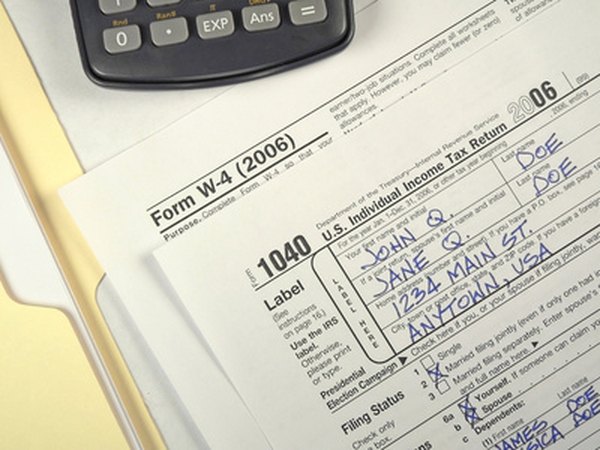A Traditional IRA: Pros & Cons
Traditional IRA contributions and distributions must be reported on your taxes.
tax forms image by Chad McDermott from Fotolia.com
Created by the Employee Retirement Income Security Act in 1974, traditional individual retirement arrangements have grown to be a staple for retirement savings in many American households because of the tax-deferred treatment of contributions. However, these plans aren't without their drawbacks, so before contributing, make sure you're aware of the account limitations.
Deductible Contributions
The obvious advantage to a traditional IRA is getting to deduct your contributions. This makes traditional IRAs particularly beneficial if you expect that you'll pay a lower tax rate in retirement than you will when you make the contribution. In addition, you claim the deduction as an adjustment to income, which means you can claim the tax break even if you don't itemize. The downside is that you aren't eligible to deduct your contributions if you put money in an employer-sponsored plan -- or your spouse does -- and your modified adjusted gross income is too high.
Tax-Sheltered Growth
While the money sits in your traditional IRA, you don't have to pay taxes on any of the profits on your investments. For example, if you make a killing on one of your stock investments, when you sell the stock in the IRA, you don't have to pay taxes on the gains. This means you can reinvest the full amount, helping your account balance to grow faster.
Taxable Distributions
You can't avoid taxes forever with a traditional IRA. With a traditional IRA, you have to pay taxes when you take the money out. However, this disadvantage is often outweighed by the deduction for contributions if you fall in a lower tax bracket at retirement than you did when you made the contribution.
Required Distributions
You also can't avoid taxes by leaving the money in your traditional IRA indefinitely. Instead, beginning in the year you turn 70 1/2, you must start withdrawing a minimum amount each year, even if you don't need it. Even though the IRS forces you to take these distributions, you still have to pay taxes on them.
Early Withdrawal Penalties
The last downside to a traditional IRA is the potential for early withdrawal penalties. If you take a distribution before you turn 59 1/2, you'll have to pay an extra 10 percent tax penalty unless you qualify for an early withdrawal exception. Unfortunately, there's no general hardship exception, so losing your job alone won't get you out of the penalty. Exceptions include buying a first home, higher education expenses and certain large medical expenses.
References
Writer Bio
Based in the Kansas City area, Mike specializes in personal finance and business topics. He has been writing since 2009 and has been published by "Quicken," "TurboTax," and "The Motley Fool."

